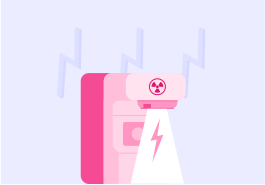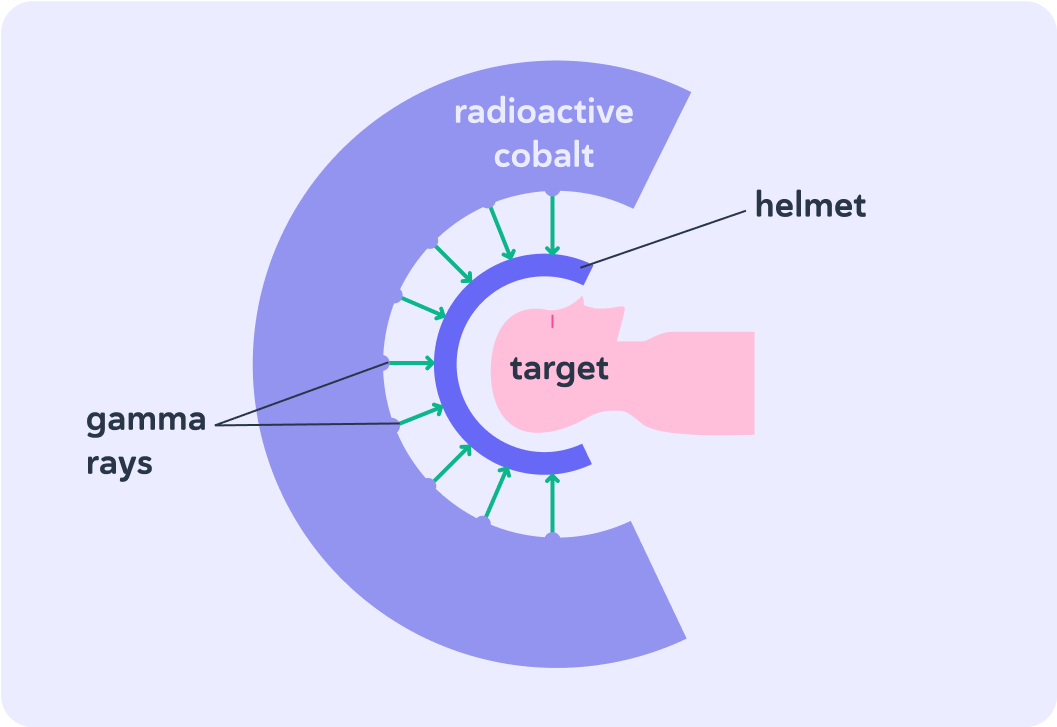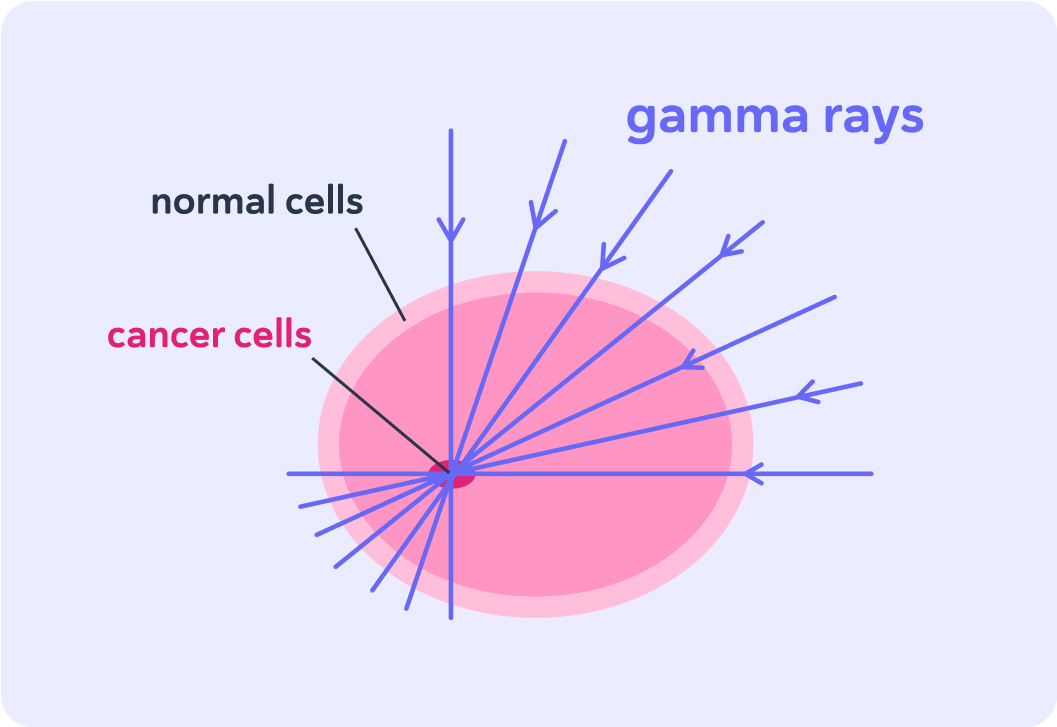YOU ARE LEARNING:
Treatment of Tumours

Treatment of Tumours
Radiotherapy makes use of ionising radiation to damage cancerous cells.
In all types of cancer, some of the body's cells begin to divide uncontrollably and spread into surrounding tissues. These extra cells form growths that we call...

Currently there are two main treatments for cancerous tumours, apart from surgery. One treatment uses drugs. The other treatment uses high energy particles or waves to damage the cancer cells. What do we call these two treatments?

You can select multiple answers
So cancerous tumours are unwanted growths of cells. Radiotherapy (short for radiation therapy) uses high doses of radiation to destroy or damage cancer cells.
The radiation that we use for treating tumours removes electrons from atoms and molecules in the body tissue it passes through. This means that it forms ions, so this is ____________ radiation.

The radiation used for treating tumours is ionising radiation. It removes electrons from cells and tissues which damages or even destroys the cells.
Radiation therapy requires high energy radiation, because it has to be ionising. Which ones of these do you think we use in radiotherapy? Pick two options.

You can select multiple answers
At high doses, radiotherapy damages cells' genetic material, so they can't grow and may even die. What do we really mean when we say "genetic material"?

There are two types of radiotherapy: Internal and external. In one type, a radioactive source is placed directly at or near the tumour inside the body to deliver radiation directly to the source of the cancer. This is ...

The diagram shows how external radiation therapy is used in the treatment of a brain tumour.
Radioactive isotopes of cobalt emit gamma rays, which deliver targeted radiation to the tumour.

A gamma ray is written as 00γ . Does a gamma ray have any mass? Answer yes or no.


So gamma rays have no mass and no charge, so gamma rays are...
A) radioactive particles. B) radioactive waves.
Answer A or B.


Gamma rays are electromagnetic (EM) waves
They are at the end of the EM spectrum with short wavelengths. Waves with shorter wavelengths have more energy and are more ionising than those with longer wavelengths.

The patient is wearing a kind of helmet that is also called a "head shell" or a "mould". It helps keep the patient still. Why do you think that's important?
A) To ensure the radiation is accurately targeted to the tumour. B) To stop the radiation from reaching the tumour. C) To prevent the patient from feeling any pain.
Answer A, B or C.


This shows how gamma rays target exactly the place where the cancer cells are. Do the cancer cells receive a higher or a lower dose of radiation than the healthy cells?


Radiotherapy aims to damage or destroy cancer cells, whilst doing as little damage as possible to healthy cells.
The gamma rays pass through healthy tissue and meet at the point where the cancer is. This means that healthy cells receive a much lower dose of radiation than the cancer cells.

Summary
Cancer causes tumours
Tumours are growths of unwanted cells.
We can use radiotherapy to shrink or kill tumours
We need to use ionising radiation for radiotherapy. The removal of electrons from the tissue is what damages the cells.
We use X-rays or gamma rays for radiotherapy
They have short wavelengths and high energy, which makes them ionising. Radio waves and microwaves, for example, don't have high enough energy to be ionising, so they don't work for radiotherapy.
There is internal and external forms of radiotherapy
Internal radiotherapy puts the source of radiation inside the body near the cancer cells. In external radiation therapy, waves are targeted to meet where the cancer is, so that healthy cells are damaged as little as possible.
